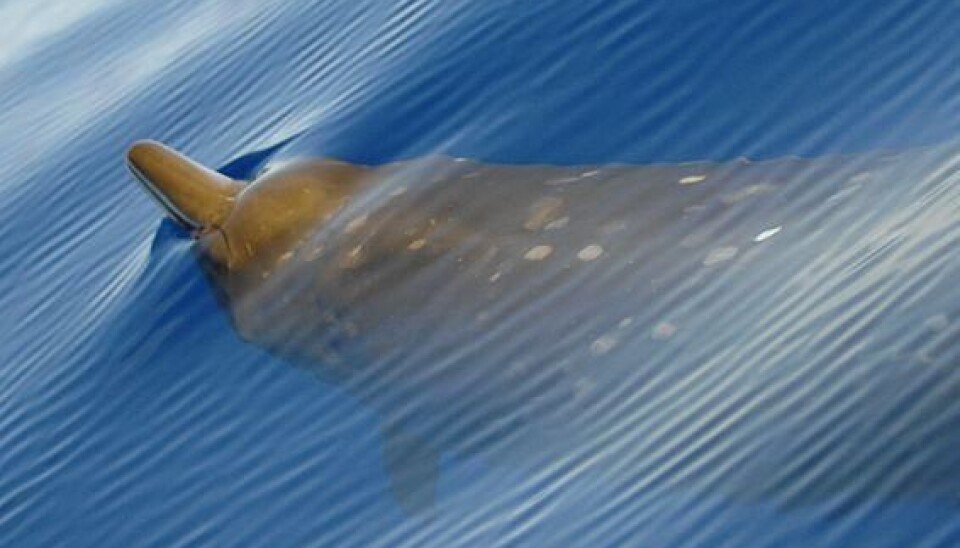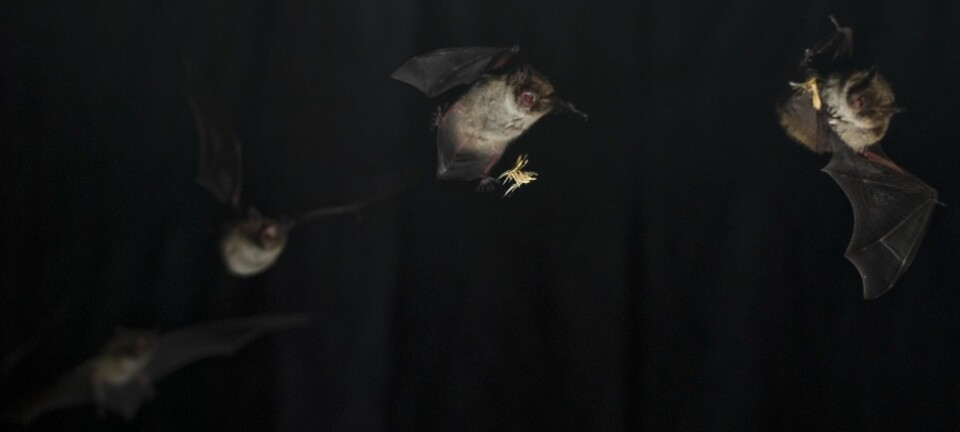
Whale keeps its beak shut to avoid being eaten
Beaked whales only 'talk' to each other deep below the surface of the ocean. A new study shows that when close to the surface they keep quiet to avoid falling prey to predators.
Sowerby's beaked whale (see box below) has developed a cunning trick that makes it more difficult for predators to catch them. Other whale species often attract the attention of predators because they are noisy, babbling away with each other wherever they are, whereas the beaked whale has figured out that it can avoid getting caught by shutting up when it gets close to the surface, where they are easier to spot.
These findings come from new research carried out by Professor Peter Teglberg Madsen from the Institute of Biology at Aarhus University in collaboration with biologists from the U. S. and Canada.
The researchers discovered the 'trick' after a period of five years, during which they had small sound recorders strapped to the backs of beaked whales off the Canary Islands to study how these rare and little-studied whales communicate with each other.
Researchers abandon old hypothesis
Like humans, whales produce sounds using the air in their lungs. Since whale lungs compress while they are diving, the researchers assumed that like other whales, the beaked whales would communicate by sound when close to the surface, where they have more air available.
To their great surprise, beaked whales do not make a sound unless they are at least 170 metres below the waves, but 'chat' away to their hearts content deeper down. The researchers recorded whistling and clicking sounds as far down as 900 metres - the greatest depth at which animal sound has ever been recorded.
The study, published in the scientific journal Marine Mammal Science, also shows that Sowerby's beaked whale spends less than five percent of its time at the surface and that they live at a median depth of some 400 metres.
Safe and sound in deep water
Beaked whales are extremely proficient divers and can hold their breath for up to an hour, diving deep to catch deep sea octopus and fish.
"By only making sounds at considerable depths and keeping away from the surface, beaked whales can avoid the risk of being discovered by killer whales, who are known to hunt and kill beaked whales but cannot dive very deep," Madsen says in a press release.
"We now know that beaked whales only make sounds at great depths and swim a long way between the position where they uttered the sounds and where it ends up at the surface. The risk of getting caught by killer whales has apparently resulted in beaked whales reserving social behaviour and sound communication for the deep.”
The researchers will be continuing their studies in an attempt to understand how beaked whales are actually able to produce sounds with the little air they have at their disposal deep beneath the surface of the sea.
Not an expression of high intelligence
Madsen stresses that the animals' ability to keep quiet is not an expression of high intelligence in relation to other whales.
"They have simply developed a different survival technique compared to killer whales: the smaller dolphin swims in large flocks to avoid getting caught and eaten. Other species make sounds at high frequencies so killer whales cannot hear them. The third technique, used by Sowerby's beaked whale, is to keep its beak shut."
He believes that instinct is at play.
"It is a form of natural selection: I think it is very much down to instinct as most beaked whales have never seen a killer whale. The same applies to humans and chimps when it comes to snakes: even people who have never seen a snake steer clear of them," he concludes.
Read the article in Danish at videnskab.dk





